Competition in desktop 3D Printing continues to be fierce—especially with the least expensive printers. We are seeing leaders emerge now, however, and stabilization is occurring for each segment. On the low-end Creality, Anet and XYZPrinting dominate, but there is a large number of smaller players. The midrange is the fiefdom of Prusa. On higher-end systems, Ultimaker does well, especially for businesses.
Whereas initially, our market was a hell-bent dash for a future that no one understood, now we see rational approaches to the market. Companies are finding segments to conquer and honing propositions. Printers have become much more reliable as seasoned R&D and production people, as well as more well-organized firms, make their mark. Automated bed leveling, better components, longer-lasting parts, better displays, better user interfaces, and tighter integration with software have become more prevalent. Players, especially in the midrange and beyond, have now moved toward curated “ecosystems” and a more integrated offering focusing on applications. Desktop printers have continued to penetrate businesses and are increasingly being used desk-side by engineers.
Filaments such as flexible materials have become much easier to print. More functional filaments have emerged as large plastics companies have involved themselves in the industry. A shortage of PLA has caused some firms to shift focus to other polymers. PETG and variants were the major beneficiaries of this. Overall, the skill level in 3D printing across the whole community has improved. Everyone’s parts are looking nicer and people are turning to more advanced methods and parts. In general, we can see a movement toward more functional parts, as well.
This has been a strange year for 3D printing with a lot of interest in our technology and many doing well with the 3D printing of PPE and the like. Simultaneously, many corporate purchases have been delayed, some consumers have become understandably tight-fisted with their money and others have delayed upgrades and planned purchases. The delay of 3D printing trade shows also meant that many machine launches were postponed or even canceled. We’re seeing a rationalization across the board with more people buying and using 3D printers because they are useful, not because they are toys. This year is a good year to buy a 3D printer, just as in each previous year the quality of the systems is better now than before.We created this guide as a resource for you with the hope you can find some systems that are worth considering at every price point.
The desktop 3D printing market consists of low-cost desktop 3D printers for around $500, midrange machines for approximately $1,000, and professional systems for above $2,500.
Low-Cost Desktop 3D Printers
In low-cost systems, printers function intermittently. There is often some assembly required and a lot of tweaking to be done. With Tender Loving Care, and with the help of communities around them, these printers can work. They’re for those who are budget-constrained and want the cheapest possible solution. I’d recommend them to someone who likes to hack hardware and modify things, but not if you’re going to print a lot of items. It would be perfect for the mechanical engineering student who has time to invest in improving it, for example. If you are a teacher, however, and want to print a lot of things for your kids, then I’d look at a more expensive machine.
Safety is an issue in this segment and I personally would not let any of these systems run unattended. Printer longevity due to component failures is also a problem here. These machines are statements in value engineering and are getting better all the time. Across a number of in-depth, long-term reviews by our team, we were pleasantly surprised with how well these systems printed compared to some years ago. At the same time, desktop 3D printers are not toasters for stuff. They will not be as reliable as your oven, TV or anything else in your house really.
XYZ Printing DaVinci Jr. 1.0 Pro – $400

XYZPrinting has shifted towards more models with open filament, meaning that you don’t have to buy the printing materials from them. This has made their printers much more attractive and improved in terms of total cost of ownership. At the time of writing (August 2020), they are also offering steep discounts, which make their systems very attractive now. The Da Vinci Junior Pro has a tiny build volume, but this compact printer has an enclosed printer that comes with software and anything you need to get started for around $400. It is comparatively easy to use, in a compact package. Don’t expect great print quality here, but it is affordable and now open filament.
Monoprice MP Select Mini V2 – $220

Monoprice is a retailer of all kinds of electronics, but has made an outsized impact on our market with its rebadged 3D printer offering. Flawed machines that beg for upgrades, Monoprice printers have lively online communities have sustained these machines for years. The MP Select Mini V2 is still the one that has the most lively following and, at around $220, its a small build volume, stable platform printer that, with mods, could work out quite well for you. Be aware that you don’t end up spending $200 in upgrades because, then frankly, there are other machines out there which are better at that total price.
Creality CR 6 – $429
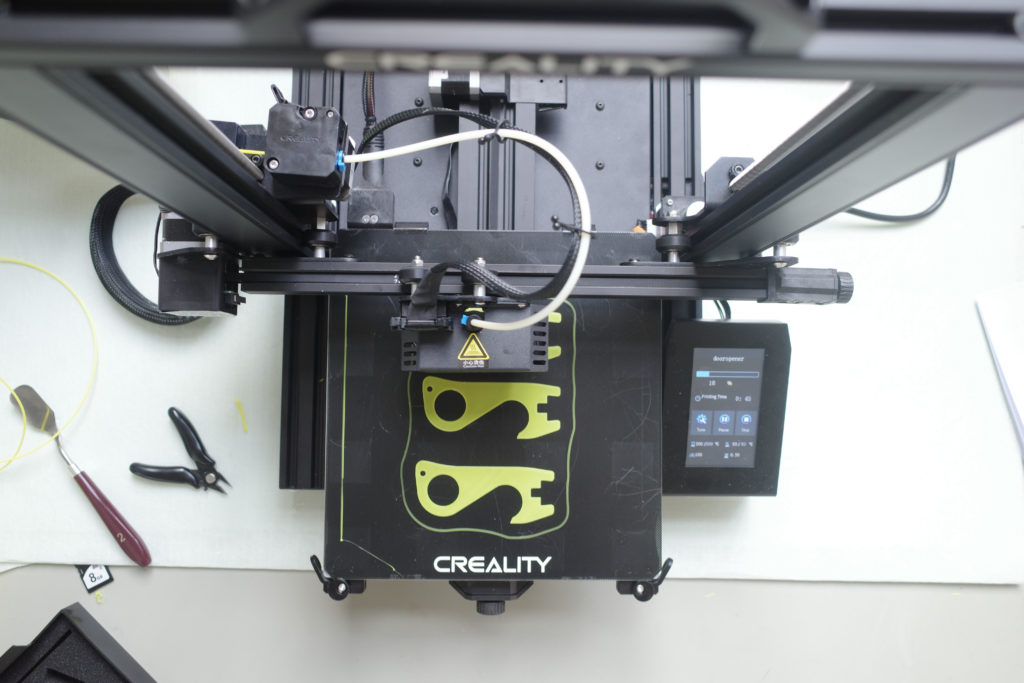
When I reviewed an advanced copy of the Creality CR 6, I was pleasantly surprised at how complete this printer was. Operating it was much easier than earlier versions. It was quiet, printed well, and was reasonably reliable with good features. For around $400 it is a good setup, it can be configured to print surprisingly well.
Anet A8 Plus – $300

Still simple and a lot of bang for your buck—now with an aluminum frame—the safer newer Anet A8 Plus is now around $50 more expensive. A lot of value for money here but will need tweaking and attention. Components will not last very long.
Flashforge Adventurer 3 – $449

A year on the Flashforge Adventurer 3 is unchanged. Its still a basic box that is a great value buy. It’s easy to use, has a heated bed, wi-fi, filament depletion detection. It has a limit on the spool size, which is mega annoying and may be a showstopper for some. Apart from that, great little machine. Less customizable than the straight-up I3 clones its compelling none the less.
Wanhao Duplicator 7 Plus – $600
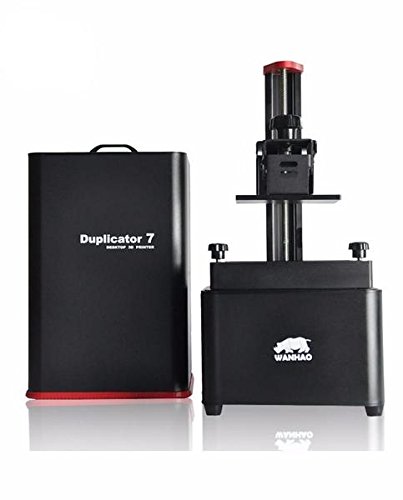
The tweaked and upgraded Wanhao Duplicator 7 Plus is around $600, $150 more than the base version. For a resin printer, this is a very low price point indeed. There are cheaper machines, but they work less well than this DLP system, which gives stunning detail and tiny feature sizes in an easy-to-operate system. Support can be spotty but users report low instances of the printer breaking.
Midrange Desktop 3D Printers
Midrange systems are best for people who want to make parts. They are more reliable than entry-level printers and are made up of components that last longer. We’re seeing better prints in this category and more features such as touchscreens, while automated bed leveling is becoming commonplace. In this category, more people are paying attention to the ecosystem: looking at filaments, settings, and software to enable better prints and better user experience.
Prusa i3 MK3S – $999
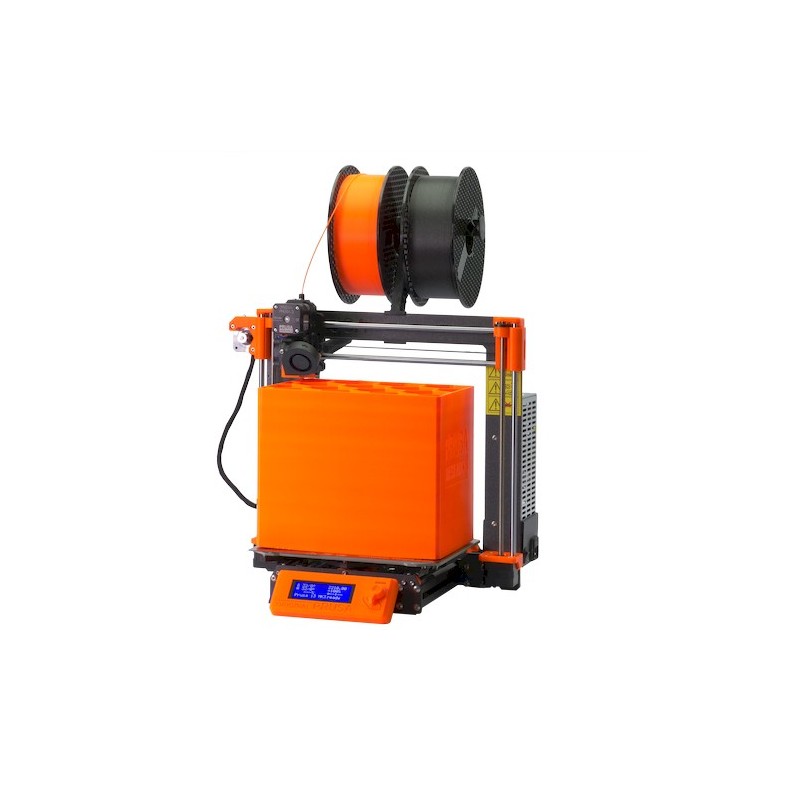
The Prusa i3 MK3S is an incredible printer. Not for everyone, since you’ll need a lot of time with it to make it print perfectly, but for $999 this is a machine with great value. It is reliable and, coupled with the right 3D printer operator, you can get some of the best print results at any price point in FDM. Great community, great support, and great community knowledge as well.
CraftUnique Craftbot Plus Pro – $1800

I’ve been a huge Craftbot fan for years. These have been reliable workhorses that are relatively inexpensive. Lately, they’ve increased the price of the machines and added lots of new features. Alongside this, the added complexity of these machines has actually increased downtime and reduced reliability. The Craftbot Plus Pro is a very interesting good value choice, but less so now.
Sindoh 3DWox 1 – $1,500

The Sindoh 3DWOX 1 deserves to be much more widely known alongside the DP200 and other similar systems. Korean printer maker Sindoh has been delivering quality systems for years now. Fully featured and very reliable, these systems also offer high repeatability. They’re built well and perform well also. Support is often difficult to get, but often with a Sindoh you don’t even need it.
Tiertime Up300 – $2,200

Tiertime made a huge impact in the initial stages of desktop 3D printing through its UP printers, which were the first Chinese printers to gain wide acceptance. Popular simple machines that worked well, the UPs did not last much beyond a year of intense use. Now, after a number of years, the company has another very interesting offering in the UP300. Hepa and Carbon Filters, interchangeable nozzles made for specific materials, and a relatively large build volume—this is a feature-filled machine. Don’t expect it to last forever, but it could do you well for a while.
Pro 3D Printers
Pro 3D printers are meant to be used by businesses. In this segment, more effort has been put into ease of use, hardware component quality, user interface and software, as well as print quality. Build volumes and speeds are higher, as should be overall performance. These printers now are approaching “printing with a few clicks and some user knowledge”, rather than pray and hope for the best.
Raise 3D Pro 2 Plus – $5,500
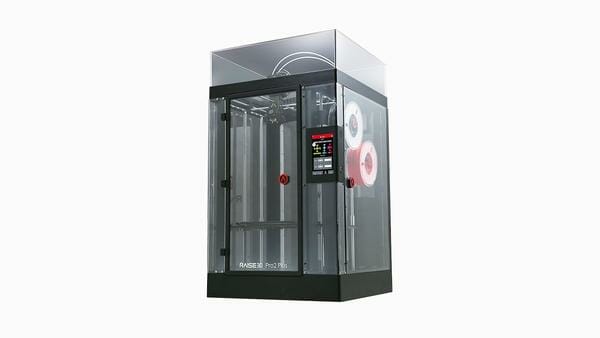
The Raise 3D Pro 2 Plus is a rather complete offering from a company that wants to challenge existing firms with a highly accurate large printer. Excellent print results and good user interfaces make this a very compelling printer. Service is only so-so, according to customers, however. At the same time, the serviceability of this system is rated lower than comparable systems by both resellers and users. It will simply be more time consuming and difficult to service this system.
MakerBot Method – $6,500

I know that I’m going to get flack for this, but the MakerBot Method is a good machine. Whereas some previous MakerBot systems have been abysmal, this thing actually works well. Customers I’ve spoken to have been happy with it. Solidly built, easy to use and reliable, it’s a machine with good software integration, as well. It is relatively limited in materials, so, while it does deserve your consideration. in my mind, a larger materials portfolio makes other printers more compelling.
BCN3D Epsilon – $7,900

BCN3D’s Epsilon printer is a powerful, independent nozzle machine with HEPA & carbon filters onboard. It has interesting features, such as a specific fiber material nozzle and easy-to-use cloud features, which make this a good machine to consider. Users seem happy, although the track record so far is not extensive. Designed to be a desk-side system for engineers this is a great choice for that specific application or use within an enterprise.
Formlabs Form 3 – $3,700

Formlabs machines are a dream to use. With integrated software and hardware, the Formlabs experience is as close as you can get to “one click” 3D printing nowadays. With an expanding portfolio of higher performance resins, Formlabs has made itself much more attractive as a proposition. The Form 3 works like a charm and rarely fails prints. If you want to make molds, perform lost wax casting for jewelry, or make highly detailed objects, then this is the printer for you. For these machines, you do have to remove part supports by hand and post process to finish a part. If the item must be detailed, then this is your best choice. But, if part strength or durability is key, FDM would make for a better choice.
Ultimaker S5 – $6,000
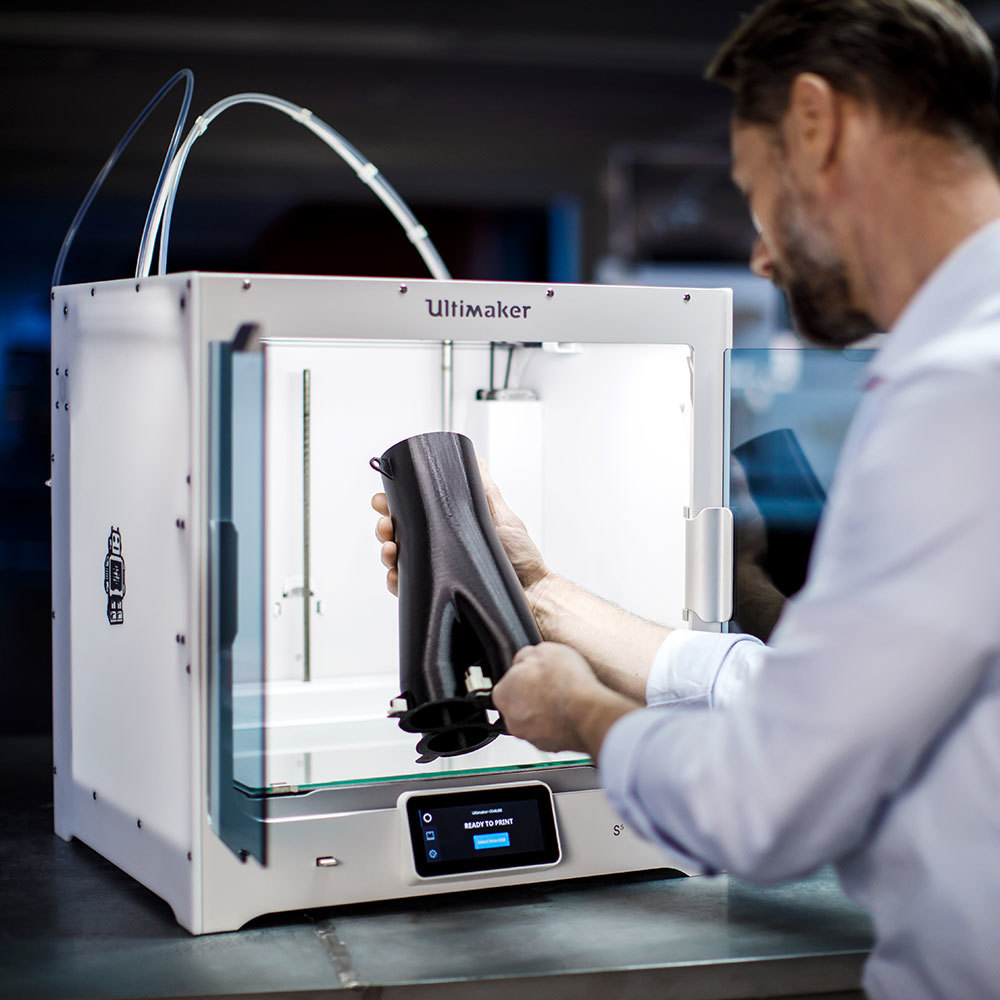
I really loved the Ultimaker S5 when I first reviewed it. I’ve only begun to appreciate it more recently. It just works, it keeps on stomping out parts and has the highest reliability of any desktop system currently. It’s relatively expensive, but totally worth it. A lively community, good software, and an ecosystem focus make this an excellent choice.
In the table below, we compare all of the 3D printers discussed in this guide in terms of cost, size, technology, openness to third party materials, build volume and cost per liter of build volume.
| Printer | Brand | Cost | Build Volume | Technology | Open | Build Volume in Liters | $ Cost Per Liter of Build Volume |
| MP Select Mini V2 | Monoprice | $220 | 120 X 120 X 120 mm | FDM | Yes | 1.7L | 129 |
| A8 Plus | Anet | $300 | 300 X 300 X 350 mm | FDM | Yes | 31.5L | 10 |
| Da Vinci Pro Jr. 1.0 | XYZ Printing | $400 | 150 X 150 X 150 mm | FDM | Yes | 3.4L | 117 |
| CR 6 | Creality | $429 | 235 X 235 X 250 mm | FDM | Yes | 13.8L | 30 |
| Adventurer 3 | Flashforge | $449 | 150 X 150 X 150 mm | FDM | 0.5 Kg spools | 3.4L | 132 |
| Duplicator 7 Plus | Wanhao | $600 | 120 X 68 X 200 mm | DLP | Yes | 1.6L | 375 |
| Mk 3 | Prusa | $999 | 250 X 210 X 210 mm | FDM | Yes | 11L | 90 |
| 3DWox 1 | Sindoh | 1,500 | 210 X 220 X 195 mm | FDM | Yes | 9L | 166 |
| Craftbot Plus Pro | CraftUnique | $1,800 | 425 X 250 X 500 mm | FDM | Yes | 53L | 34 |
| UP300 | Tiertime | $2,200 | 205 X 255 X 225 mm | FDM | Yes | 11.8L | 186 |
| Form 3 | Formlabs | $3,500 | 145 X 145 X 185 mm | SLA | No+/- | 3.9L | 897 |
| 3D Pro 2 Plus | Raise3D | $5,500 | 605 X 305 X 305 mm | FDM | Yes | 111L | 50 |
| S5 | Ultimaker | $6,000 | 330 X 240 X 300 mm | FDM | Yes | 23L | 261 |
| Method | Makerbot | $6,500 | 190 X 190 X 196 mm | FDM | No | 7L | 929 |
| Epsilon | BCN3D | $7,900 | 420 X 300 X 400 mm | FDM | Yes | 50L | 158 |
Dozens of interviews with resellers, users and material vendors have lead to this comparison of printers. It is impossible to have a “best” 3D printer because these devices are so different and have better optimal performance due to a lot of reasons. Therefore, if you’re looking for a printer, look at this guide as your path to the most credible systems for you to evaluate.
The post Desktop 3D Printer Buying Guide 2020 appeared first on 3DPrint.com | The Voice of 3D Printing / Additive Manufacturing.
from Your daily news from 3DPrint.com https://bit.ly/32Im08V
